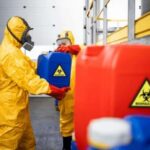In various industries and medical environments, the use of Personal Protective Equipment (PPE) is crucial for ensuring the safety and health of workers and patients. PPE is designed to protect individuals from hazards that can cause injuries or illnesses. This blog aims to shed light on the proper use of PPE, highlighting its importance, types, and best practices for effective use.
Understanding PPE: What is it and why is it Important?
PPE refers to protective clothing and gear designed to safeguard individuals from physical, chemical, and biological hazards. This includes items such as gloves, masks, gowns, safety glasses, and more. The use of PPE is essential in minimizing exposure to hazardous elements, especially in settings like healthcare facilities, laboratories, and construction sites. Proper use of PPE not only protects the individuals wearing it but also helps in preventing the spread of contaminants to others.
Types of PPE
- Protective Clothing: Includes lab coats, gowns, aprons, and full-body suits.
- Respiratory Protection: Masks and respirators that protect from inhaling harmful substances.
- Eye Protection: Safety glasses and face shields to prevent injury to the eyes.
- Hand Protection: Gloves that vary in material and thickness based on the type of hazard.
- Head and Foot Protection: Helmets and safety boots to protect from falling objects and sharp items.
Best Practices for Using PPE
- Proper Selection: Choose PPE that is suitable for the specific hazard and environment.
- Correct Fit: Ensure that PPE fits correctly to provide maximum protection.
- Training: Users should be trained on the correct use, limitations, and maintenance of PPE.
- Maintenance and Inspection: Regularly inspect PPE for damage and ensure it is clean and functional.
- Proper Donning and Doffing: Follow guidelines for putting on and taking off PPE to avoid contamination.
- Hygiene and Care: Practice good hygiene before and after using PPE to maintain its effectiveness.
Conclusion
The proper use of PPE is a critical component in maintaining a safe working environment. By understanding the types of PPE and adhering to best practices for its use, individuals can significantly reduce their risk of injury or illness. Remember, PPE is your last line of defence against hazards, and its effectiveness largely depends on how appropriately it is used. Stay safe and stay protected!











 LOOKING FOR A JOB?
LOOKING FOR A JOB?